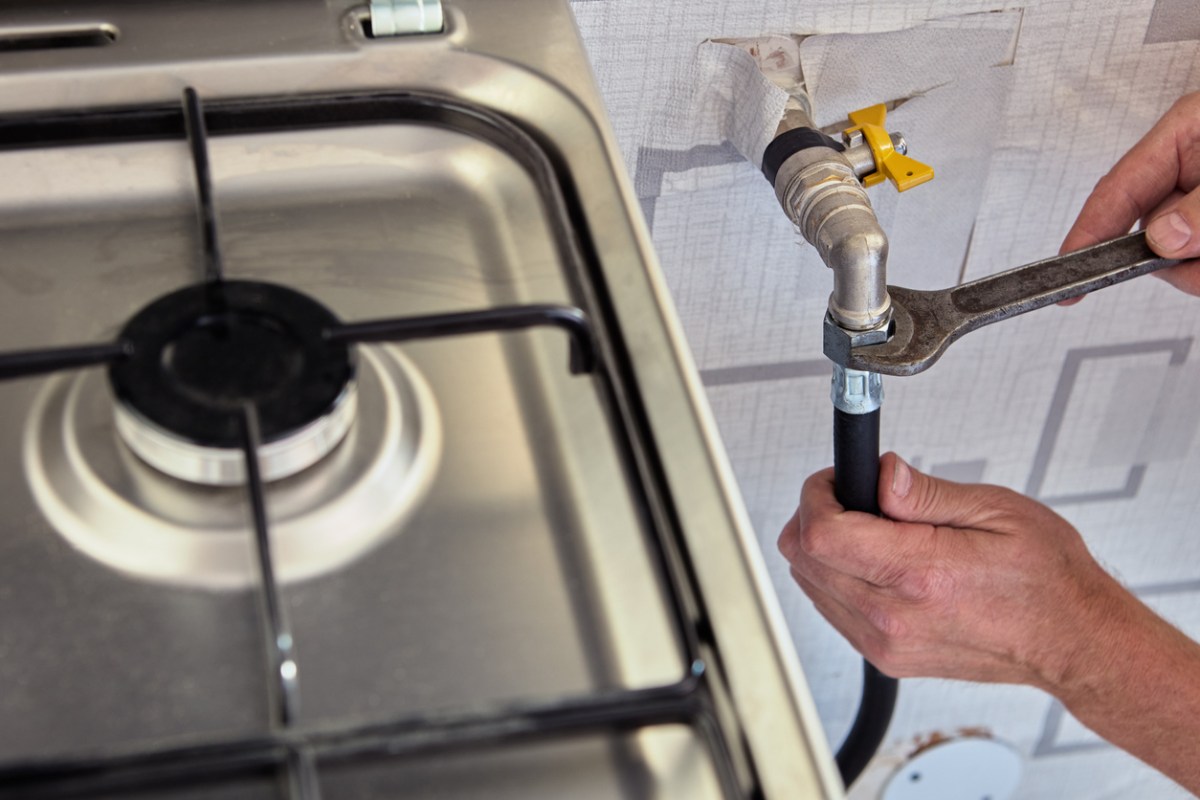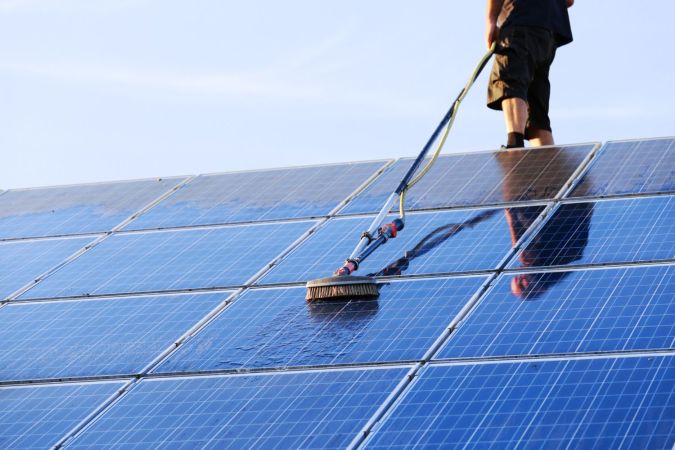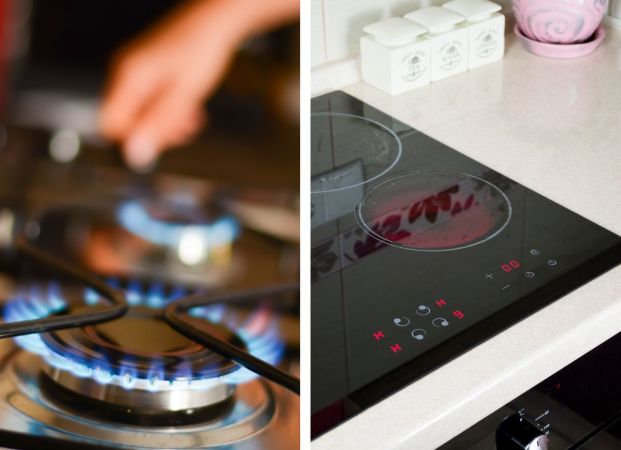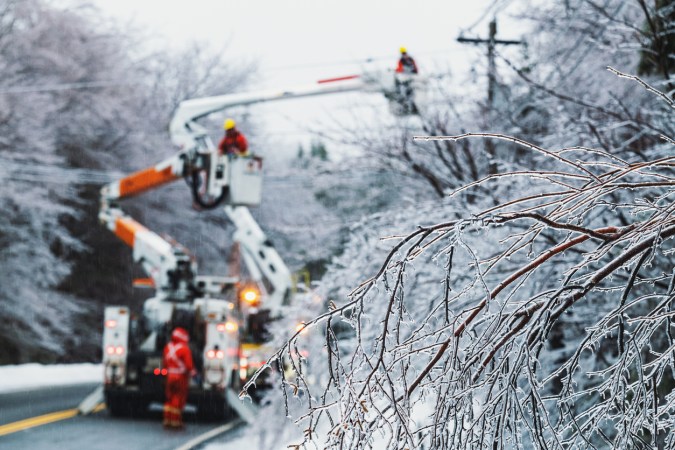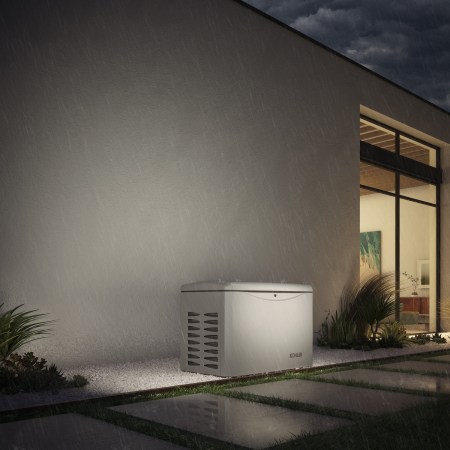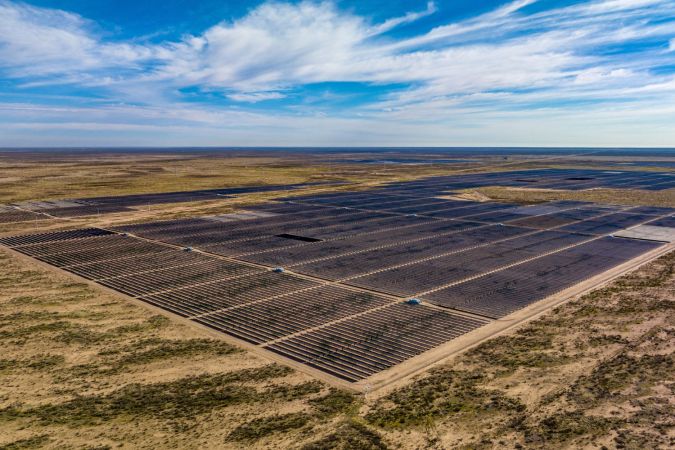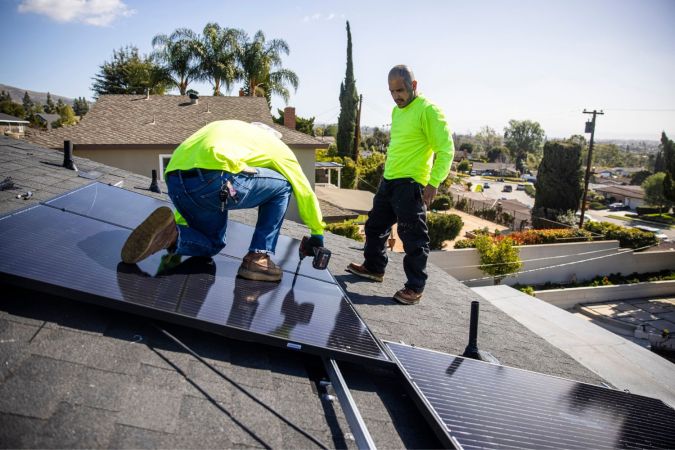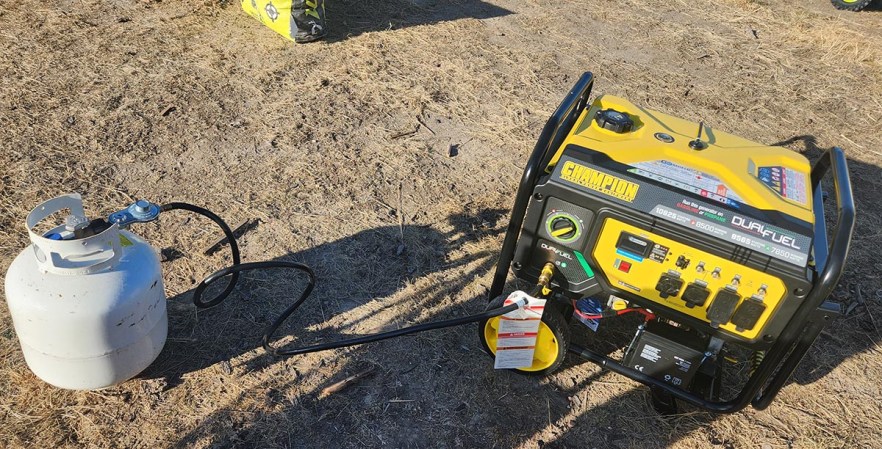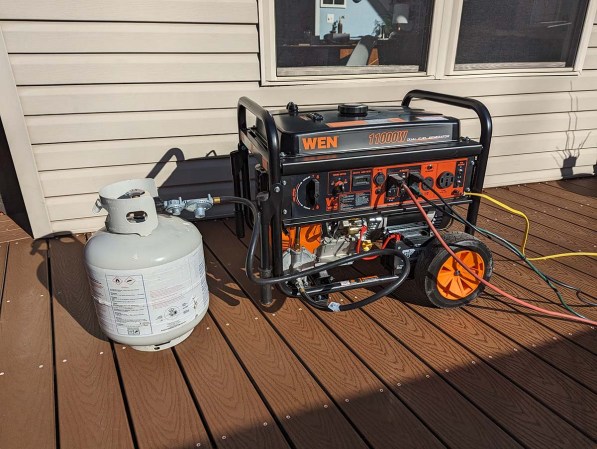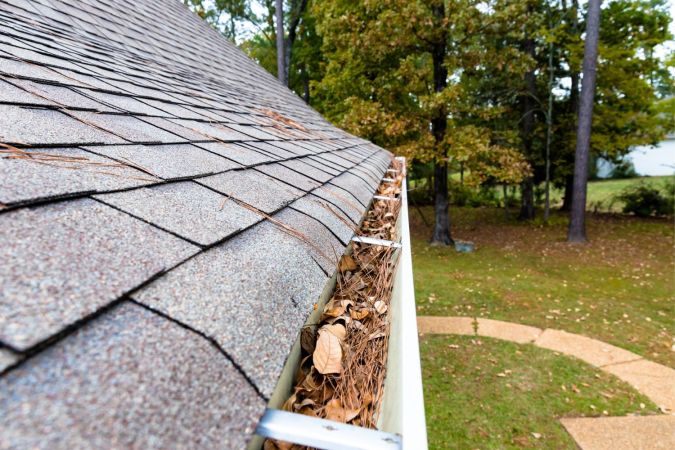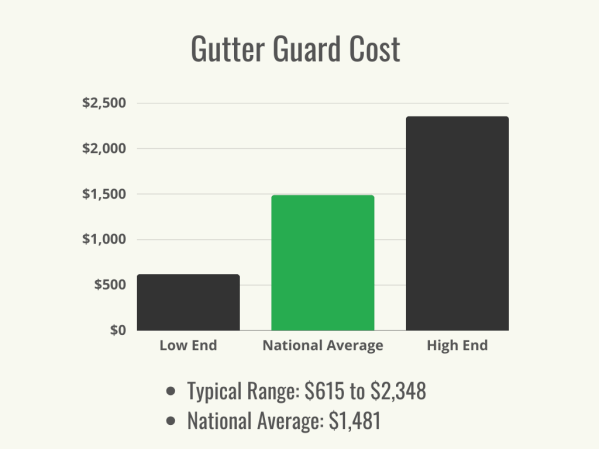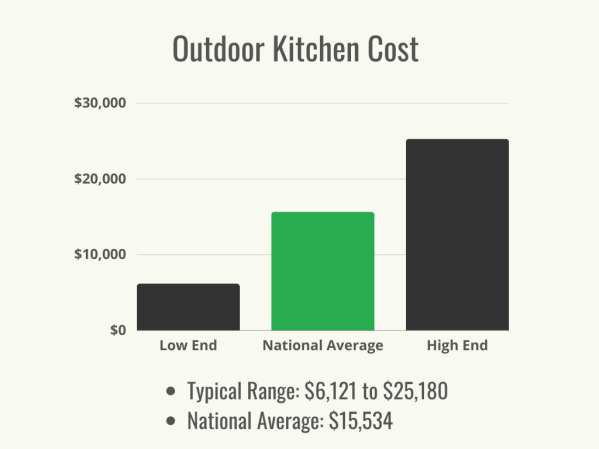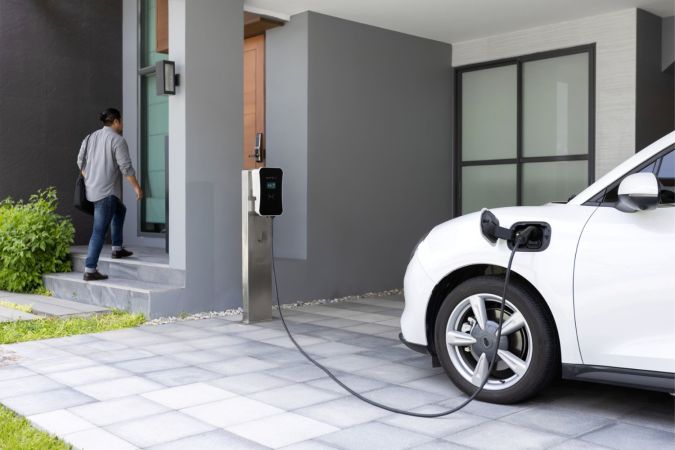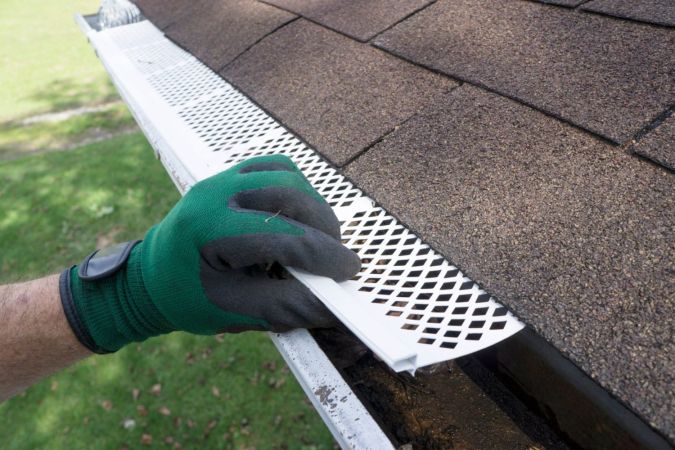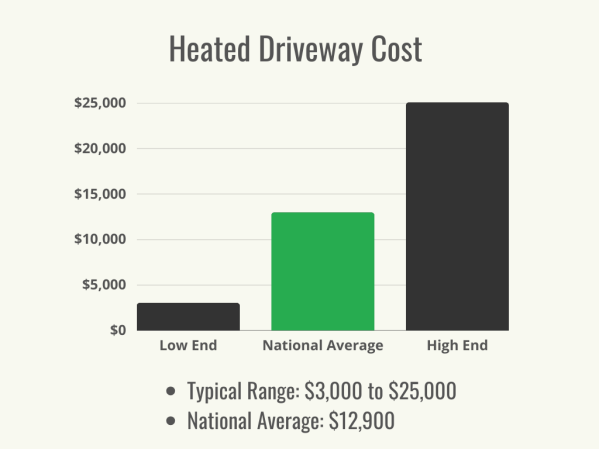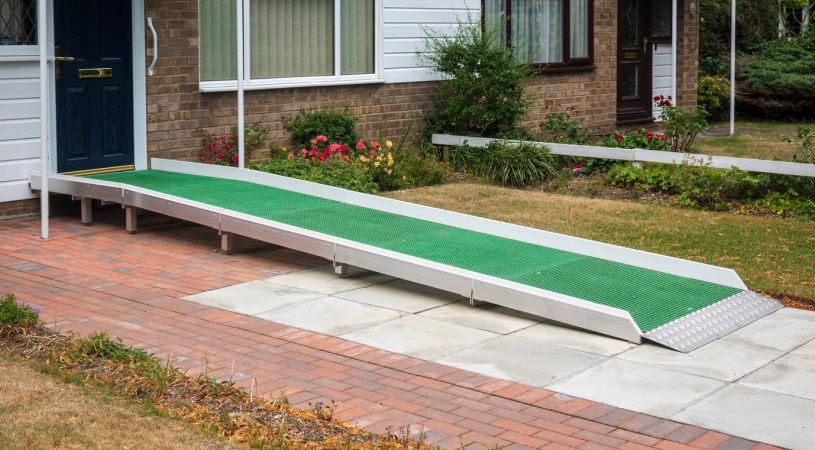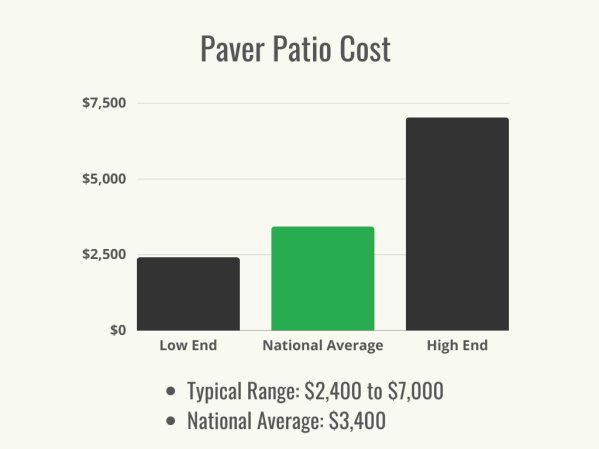We may earn revenue from the products available on this page and participate in affiliate programs. Learn More ›
Highlights
- The average gas line installation cost is $558, though a typical range is $120 to $1,350.
- Several factors will affect the final installation price, including the pipe length and material, trenching costs, meter and valve installation, number of gas appliances, and labor rates.
- Homeowners who opt for gas over electric appliances will find that gas is readily available, and they’ll experience better energy efficiency, better cooking control, and the ability to run their appliances in the event of a power outage.
- Installing gas lines is not an average DIY job. Due to the dangers of working with gas, the installation of gas lines is regulated to ensure a licensed, qualified plumber completes the project safely.
A gas installation service is how a plumber fits and lays pipes to supply gas to a property for a new gas stove, heater, or other gas-operated appliances. According to Hendrik Vandepoll, master plumber and co-owner of Service Force Plumbing in Rockville, Maryland, “The most common calls we get for gas line installation are for homeowners who already have gas installed for their furnace and water heater, and they want to extend gas functionality to their fireplace, stove or an outdoor fire pit.”
The cost to install a gas line can vary depending on the length of the gas line, accessibility of the installation site, whether it’s for residential or commercial use, and whether any permits or inspections are necessary. According to Angi and HomeAdvisor, homeowners can expect to pay between $120 and $1,350 to have a gas line installed, with the national average at $558.
Gas line installation costs can be even higher for more complex projects, such as installing an underground gas line with several bends in it or extending a natural gas line to a new area of the property. It’s important that homeowners consult with a qualified gas line plumbing professional to get several quotes and ensure the job adheres to local codes and regulations. While a propane gas line installation is relatively similar to the cost of installing a natural gas line, the cost of using propane is more expensive than natural gas. Deciding between using propane versus natural gas is another consideration that homeowners can discuss with a licensed professional.
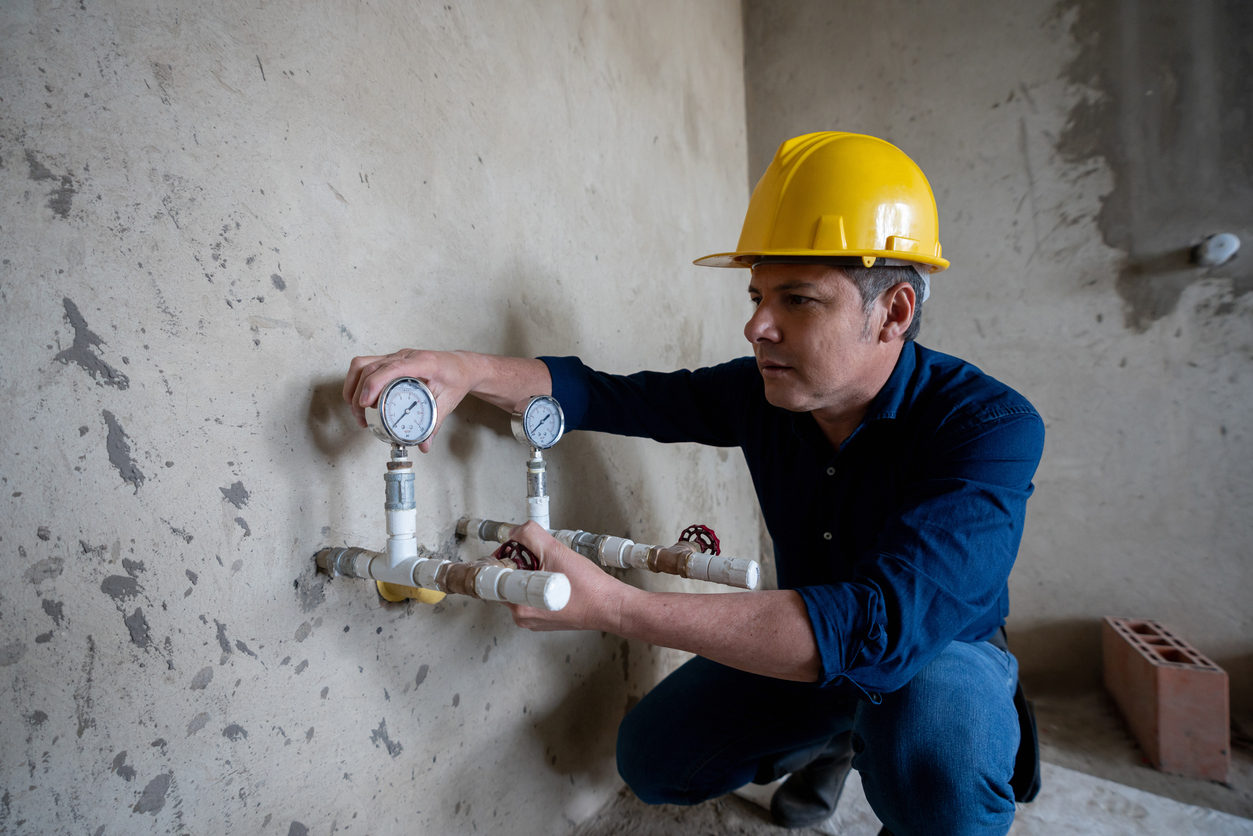
Factors in Calculating Gas Line Installation Cost
Several factors contribute to the cost of gas line installation. These can include the length and size of the pipes, the material used, trenching expenses for underground installations, and the installation of gas meters and shut-off valves. The number and type of appliances being connected, local labor costs, permits, and inspections also play a role. The national average provides a useful starting point, but local averages can differ due to varying labor rates, permit fees, and geological considerations.
Pipe Length, Size, and Material
Longer pipe lengths mean a higher cost since additional materials are needed to cover the distance. Installing pipes over longer distances may require excavation and trenching, adding to the labor costs. Contractors also need to consider any bends and turns in the pipeline, since this can add to the complexity of the installation and influence the pricing.
Larger or wider pipes also have higher material costs since they are made with durable and thicker materials to handle higher gas flow rates. Larger pipes also require more powerful equipment for installation. Homeowners looking to install gas lines will need to rely on professionals to accurately determine the right pipe size.
Different materials have varying costs, durability, and installation requirements. The selection of pipe material depends on the location, local building codes, and the intended use of the gas line. The most commonly used materials include steel, copper, and plastic. Steel pipes provide excellent strength and durability but tend to be more expensive than other options. Copper pipes, while more expensive than plastic, provide better corrosion resistance. Plastic pipes are lightweight, budget-friendly, and resistant to corrosion, making them a popular choice for many homeowners.
Trenching Costs
Contractors will need to dig a trench or excavate the area to accommodate the gas pipes underground. The process ensures the pipes are leveled and securely placed in the ground, away from any potential damage or interference. The depth and width of the trench depends on the type of soil, local regulations, and the size of the pipes. Trenching can range in price from $4 to $12 per foot depending on the depth.
Gas Meter and Shut-Off Valve Installation
A gas meter measures the amount of gas used in a home. It’s usually installed near the property’s exterior and connects to the main gas line. To install a gas meter, a contractor will have to obtain the necessary permits, coordinate with the gas company, and ensure compliance with safety regulations. The installation cost of a gas meter depends on the type and size of the meter, as well as the distance between the meter and the main gas line. The complexity of the installation, such as the need for trenching, can also affect the cost. Since gas utility companies own and maintain the meters, they’ll often install gas meters on their own—meaning homeowners typically don’t have to pay the $300 to $600 installation fee.
A shut-off valve is another important part of a gas line installation. This valve allows homeowners to control the flow of gas in emergencies or during maintenance and repairs. Knowing how to shut off the gas valve is critical in the event of a gas leak or other emergency. The gas shut-off valve is usually installed near the gas meter or inside the home to ensure easy access. Individual shut-off valves are also installed near each gas-powered appliance.
Shut-off valves can cost from $100 to $300 depending on the pressure capabilities and the pipe size. The labor runs from $150 to $200, which makes the valve installation cost range from $300 to $500.
Number and Types of Appliances
Each appliance requires a separate connection to the gas line, which involves additional materials, labor, and possible adjustments to the gas supply system. The cost increases with each additional appliance due to the need for more piping, fittings, and potentially larger- capacity gas lines to accommodate the demand for gas.
The installation of gas lines for one of the best gas ranges or a furnace may be relatively straightforward, but adding a gas fireplace or outdoor grill could make for a more complex installation. Certain appliances may require additional safety measures, such as gas regulators or venting systems.
| Type of Appliance | Average Cost (Materials and Labor) |
| Dryer | $20 per linear foot |
| Fireplace | $15 to $25 per linear foot |
| Fire pit | $20 to $25 per linear foot |
| Furnace | $20 per linear foot |
| Generator | $20 to $25 per linear foot |
| Grill | $20 to $25 per linear foot |
| Pool heater | $20 per linear foot |
| Stove | $20 per linear foot |
| Water heater | $20 per linear foot |
- Dryer. Gas pipe installation for a dryer typically costs about $20 per linear foot. Since gas dryers are more efficient than electric options, they’re a popular choice for many homeowners.
- Fireplace. Natural gas line installation for a fireplace ranges from $15 to $25 per linear foot. The cost to convert a wood fireplace to gas is approximately $3,000. The cost of a gas fireplace insert depends on local labor pricing, whether the fireplace is vented or not, and the size of the insert.
- Fire pit. Fire pits that use a gas line are safer and more efficient than wood fire pits. Installing a gas line for this purpose can cost from $20 to $25 per linear foot. Since these types of fire pits are installed underground, the choices for pipe materials may be limited.
- Furnace. Installing a gas line for a furnace costs about $20 per linear foot. Gas furnaces typically need the largest pipes and more extensive work during installation. The cost to install a gas furnace ranges from $700 to $10,000, with the national average at $2,175.The cost differences for gas or oil heat and electric furnaces versus gas furnaces depend on local fuel costs and furnace efficiency.
- Generator. Installing a gas pipe to a generator can cost from $20 to $25 per linear foot. When installing a generator, it’s important for a homeowner to hire a plumber to connect the gas line to the unit for safety reasons. Even though gas-powered generators require a smaller gas line, the installation process requires the use of specialized materials and a higher level of expertise, which can add to the overall installation costs.
- Grill. Installing a gas line to an outdoor grill typically costs between $20 and $25 per linear foot. Opting for a permanent gas line is often safer and more cost-effective than other fuel sources, especially for those who use their grill frequently. This installation project requires excavation work, which can increase the overall price.
- Pool heater. In areas where pool heaters are used often, it’s common to link them to a gas line for reliable heating. This type of installation costs about $20 per linear foot.
- Stove. Installing a gas line for a stove costs about $20 per linear foot. Many homeowners spend around $600 to connect their stove with a 30-foot gas line. A plumber is the type of professional who installs gas lines for stoves.
- Water heater. Installing a gas line to a water heater costs approximately $20 per linear foot. Water heaters need a consistent amount of gas, and although they require a larger pipe, it’s not as big as one needed for a fireplace. The monthly cost of a gas or electric water heater depends on the usage and the local utility rates.
Labor, Permits, and Inspections
Local labor costs differ from one region to another due to the cost of living, demand for service, and the average local wages. On average, labor rates for a professional plumber to install a gas line can run from $45 to $200 per hour.
Every city and municipality has specific regulations and building codes regarding gas line installations. “In our area, at least, any gas installation requires a permit and installation by a licensed plumber,” explains Vandepoll. Obtaining the necessary permits is a legal requirement that also serves to ensure the safety of the gas line system, and thereby the home’s occupants. The price of permits can vary, but they tend to range from $100 to $300 for a plumbing or building permit.
After the installation is complete, it’s important to have it inspected to make sure it meets the required safety standards. Inspections usually involve a thorough examination of the entire gas line system, including fittings, valves, and connections. Inspection fees typically range from $50 to $75, but they can cost upwards of $300 in some areas.
Installation Location
The accessibility of the installation site is also an important factor in determining gas line installation cost. If the location is easily accessible, the installation process tends to be much smoother and less time-consuming. A house may have several rooms that need a gas line connected to various appliances; it’s not the room type that affects the cost of gas line installation but the type of appliance that’s in the room.
| Installation Location | Average Cost (Materials and Labor) |
| Bathroom | $10 to $20 per linear foot |
| Bedroom | $10 to $20 per linear foot |
| Garage | $10 to $25 per linear foot |
| Kitchen | $10 to $15 per linear foot |
| Living room | $10 to $20 per linear foot |
Geographic Location
Additional labor and equipment may be required to excavate or prepare the ground in areas with rocky or uneven terrains. Specialized equipment that can shore up the trench may also be required in regions with high water tables or dense clay soil. The local climate and environmental factors can also influence the installation cost.
For areas prone to extreme weather conditions, such as hurricanes or earthquakes, additional safety measures and reinforcements may be necessary to guard against broken pipes. Gas line installations are subject to local, state, and national regulations, but there are some average costs for an underground gas line installation that homeowners can use as baselines.
| Geographic Location | Average Cost (Materials and Labor) |
| California | $956 |
| Colorado | $600 |
| Connecticut | $542 |
| Florida | $552 |
| Nevada | $502 |
| New York | $690 |
| North Carolina | $508 |
| Ohio | $599 |
| Texas | $753 |
| Virginia | $627 |
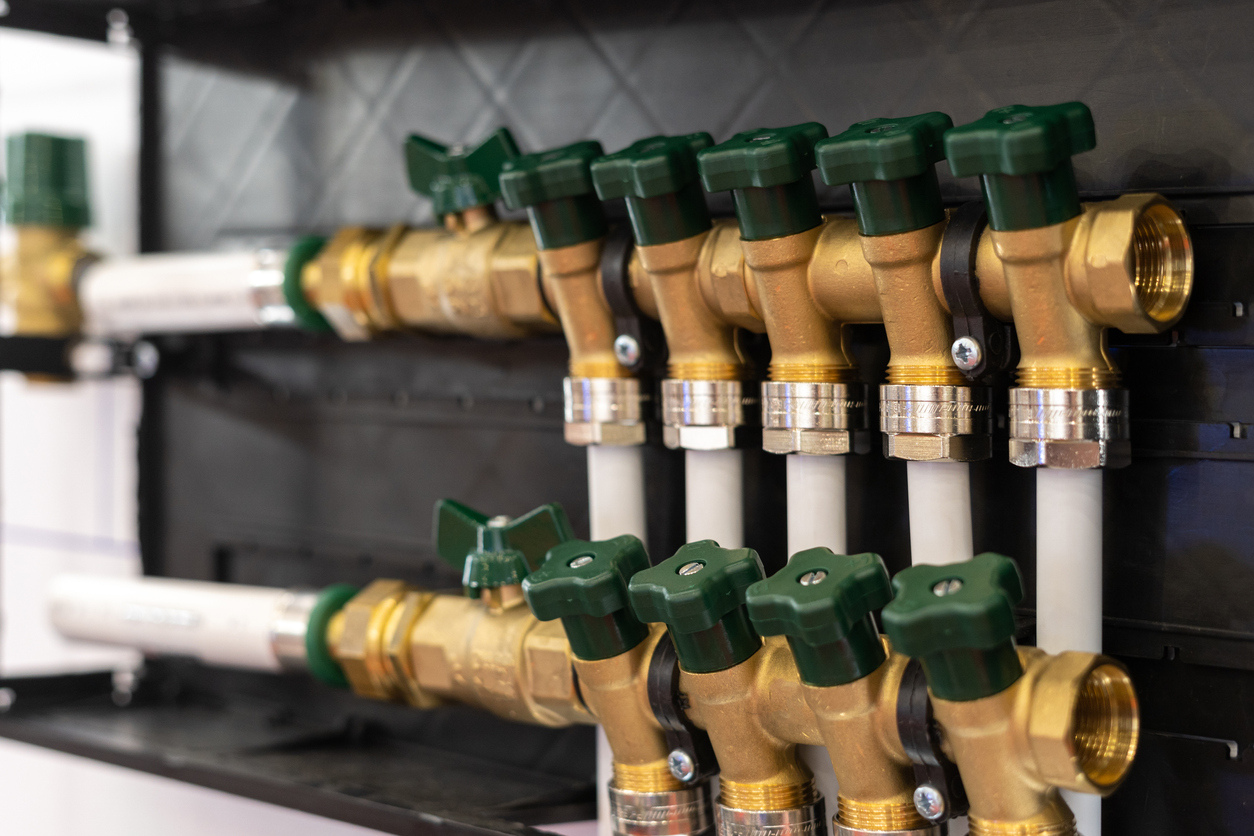
Additional Costs and Considerations
When calculating the total cost of gas line installation, it’s important for homeowners to consider various additional factors beyond the basic installation expenses. These can include whether it’s a new or replacement installation; whether there’s any landscaping and foundation work required; and whether any drywall, concrete, or flooring repairs are needed. Ongoing maintenance and repairs for the gas line itself also need to be taken into account.
New vs. Replacement Gas Line
Installing a new gas line involves the most extensive work: trenching, laying new piping, and connecting the appliance to the main line. Costs for new installations are higher because of the need for additional materials, labor, and equipment. The length of the gas line, terrain, and accessibility of the installation site can also influence the cost.
Less labor and materials are typically required to replace an existing gas line, but the costs can increase if modifications to the gas system are needed to meet current building codes. On average, gas line replacement can cost about $8 per linear foot or $700 on average for one area. A gas line replacement for the whole house can cost from $3,000 to $7,000.
Landscaping and Foundation Work
Installing a gas line usually involves digging a trench to bury the line and inserting the pipes through the foundation. Landscaping features like trees, plants, and outdoor structures need to be removed or relocated before installation begins. The cost of hiring one of the best landscaping companies can range from $300 to $10,000 depending on how much landscaping is needed. Professional landscapers charge between $50 and $100 per hour, while the best foundation repair companies (such as Basement Systems and Ram Jack) may charge between $75 to $125 per cubic yard for concrete foundation work.
Drywall, Concrete, or Flooring Repairs
Drywall repairs may be part of the finish work if the plumbers need to cut access points in the walls or ceilings for the pipes. Repairs could include applying patches and repainting the areas after the installation. The cost of drywall repairs can range from $270 to $760.
Gas line installation in certain areas of a home, such as basements or outdoor spaces, may require a plumber to break the existing foundation or floor to accommodate the gas piping. It’s a good idea to have a foundation repair company inspect the worksite and make any repairs to ensure the foundation is still secure against water leaks.
If the gas line needs to run beneath or through a tiled or hardwood floor, some sections may need to be removed and replaced after the installation process. The cost of flooring repairs runs from $2 to $30 per square foot depending on the flooring material.
Gas Line Repairs
Gas line repairs can be caused by a range of issues from minor leaks to more significant problems such as damaged pipes. If anyone in the house smells rotten eggs, sees a white cloud near a gas appliance, or hears hissing near a gas line, the gas line needs to be turned off and the house needs to be cleared of all occupants, including pets, as quickly as possible.
Homeowners should notify the gas company of the leak immediately by calling the emergency number, and a technician will visit as soon as possible. It can cost from $120 to $250 for a gas repair behind a stove, $270 to $760 for a repair in a crawl space or behind a wall, and $1,500 to $5,000 for a buried gas line repair.
Gas Lines Installation Cost by Type of Material
Different gas pipe materials offer varying levels of durability, flexibility, and resistance to corrosion, which can affect the installation price and long-term maintenance expenses. Gas pipe fittings and the pipes themselves can be constructed of any of these materials, but a plumber will know which is ideal for the pipe size and flow rate a homeowner needs.
“There’s generally not a lot of variety in the materials used for piping,” says Vandepoll. “For interior and above-ground installations, we actually don’t use the classic black steel piping too much anymore; CSST flexible piping allows us to do an installation much more quickly (and less expensively).”
| Type of Pipe Material | Average Cost (Materials Only) |
| Black iron | $4.90 per linear foot |
| Copper | $1 to $3 per linear foot |
| Corrugated stainless steel tubing (CSST) | $2 to $4 per linear foot |
| Galvanized steel | $2 to $9 per linear foot |
| High-density polyethylene (HDPE) | $1 to $2 per linear foot |
| Iron | $5 to $9 per linear foot |
| Polyvinyl chloride (PVC) | $0.25 to $2 per linear foot |
| Stainless steel | $2 to $5 per linear foot |
Black Iron
Black iron pipes are a popular choice for indoor pipes because of their durability and resistance to extreme temperatures. Their installation cost averages $4.90 per linear foot. The pricing can be higher relative to other materials because of the labor-intensive process of cutting and threading the pipes. Black iron pipes are not recommended for outdoor use since the material corrodes over time and the sealant will eventually deteriorate. The rigid nature of the material will also cause it to crack easily during earthquakes.
Copper
Copper is a less common material for gas lines. The average cost for copper piping ranges from $1 to $3 per linear foot. In some regions, copper gas lines are illegal since the metal is relatively soft and prone to damage. Some plumbers won’t install copper gas lines since improper soldering can release sulfites that can clog the line.
Corrugated Stainless Steel Tubing (CSST)
Another popular gas line material is CSST piping, or flexible corrugated stainless steel tubing. On average the cost for CSST runs from $2 to $4 per linear foot. CSST is well suited for interior installations, and it can be used in tight spaces. A potential drawback is that it may develop cracks over time.
Galvanized Steel
Galvanized steel pipes are coated with zinc to resist corrosion. They are relatively affordable at a price of $2 to $9 per linear foot, but their installation cost may be slightly higher because they need to be welded together. Galvanized steel pipes are durable, won’t corrode, and can be used for indoor and outdoor installations.
High-Density Polyethylene (HDPE)
HDPE pipes are known for their flexibility and corrosion resistance. They are lightweight, making them easier and quicker to install, which can cut down on labor costs. HDPE pipes cost from $1 to $2 per linear foot and they’re most often used outside.
Iron
Iron pipes are sturdy and long lasting, making them suitable for gas line installations. The material cost and the labor for installation might be higher as a result of the heavier weight of the iron pipe. On average, iron pipe gas lines cost from $5 to $9 per linear foot.
Polyvinyl Chloride (PVC)
At a price range of $0.25 to $2 per linear foot, PVC pipes are affordable and easy to install, but they are not suitable for all gas applications and may not be allowed by certain municipalities. Alternatively, if PVC is being used for underground installations, it may require additional reinforcement, which can increase the cost.
Stainless Steel
Stainless steel pipes are durable and corrosion-resistant but they can be more challenging to work with compared with other gas pipe materials. On average, the cost for stainless steel gas pipes run from $2 to $5 per linear foot.
Benefits of Installing a Gas Line
Installing a gas line offers many benefits that include increased energy efficiency, enhanced versatility, and availability. Many homeowners also appreciate that cooking with a gas stove offers more precise temperature control.
Increased Energy Efficiency
Gas appliances, such as furnaces, water heaters, and stoves, are known for their higher efficiency compared with electric options. Gas heating systems can heat a home more quickly and evenly, which can lead to lower energy bills and energy use.
Versatility
Gas lines allow for the use of a wide range of appliances, including stoves, water heaters, dryers, fireplaces, and outdoor grills. Unlike electric appliances, which may be limited by power availability, gas-powered appliances can operate without electricity, especially during power outages.
Availability
Unlike other energy sources that can be interrupted, natural gas is readily available in many areas. This availability means homeowners can depend on gas-powered appliances to work more reliably.
More Precise Cooking Temperatures
Gas-powered stoves offer precise temperature control and instant heat. The ability to adjust the flame quickly provides users with greater control over the cooking process. If a homeowner is replacing a kitchen stove, the pros and cons between a gas stove versus an electric stove can be considered and discussed with a pro.
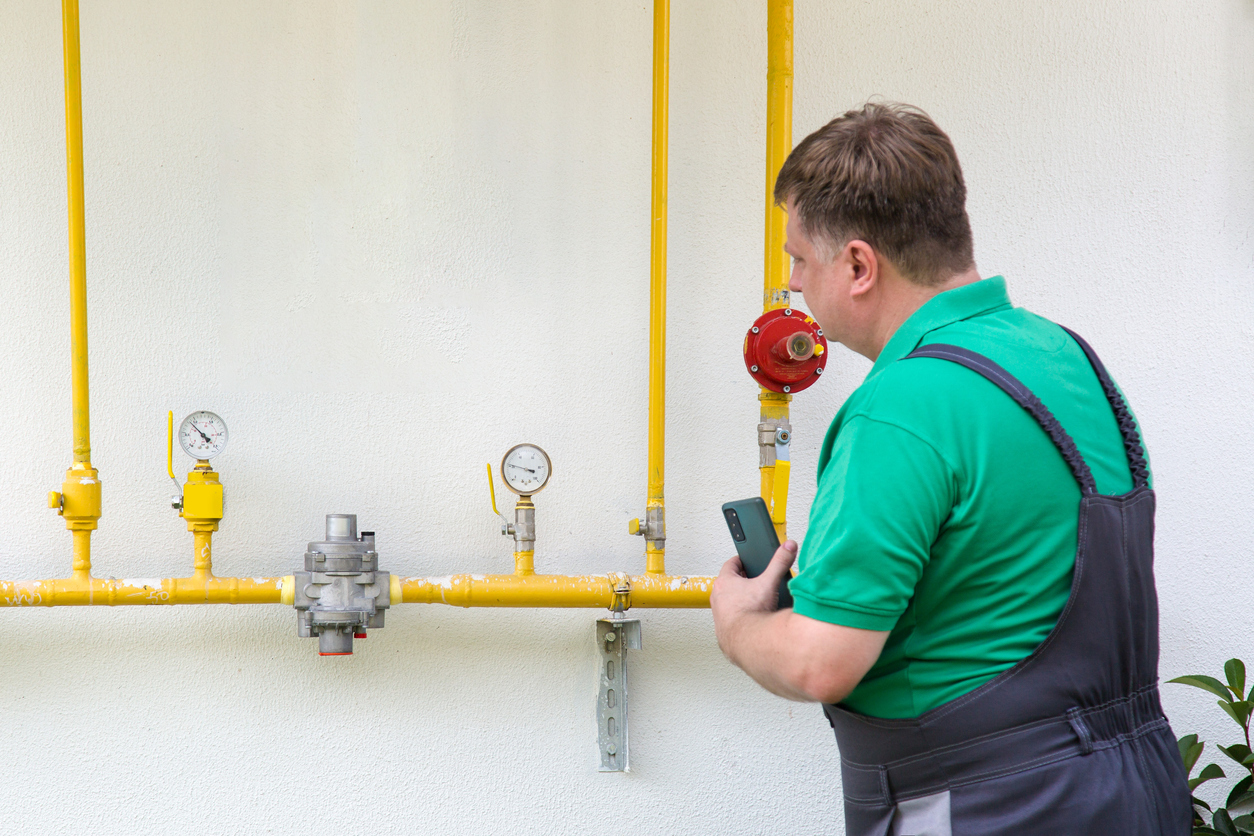
Gas Line Installation: DIY vs. Hiring a Professional
While DIY projects can save money, they also come with some risks. DIY gas line installation requires a high level of skill and knowledge to ensure safety and compliance with local regulations. Mistakes can lead to gas leaks, fire hazards, and regulatory violations that can result in costly repairs or fines.
According to Vandepoll, “Homeowners should never attempt a gas line installation by themselves; it would be like doing surgery on yourself. The risk of leaks and explosions is just too great to try to save a few bucks on a DIY install. There have been some high-profile whole-house explosions in the news recently; there was just a home explosion in Sterling, Virginia, a couple of days ago that we felt here in Maryland.”
Hiring a professional for the gas line installation offers homeowners the benefits of expertise, experience, and peace of mind about the safety of their gas lines. Professionals have the skills, equipment, and knowledge to install a gas line safely. Even though it will cost more to hire a professional, professionals have licensing and experience that adds a level of safety and reliability. Professionals also provide warranties or guarantees on their work.
How to Save Money on Gas Line Installation Cost
To save money on gas line installation costs, homeowners can follow some practical tips to lower their expenses during the installation process.
- Get multiple quotes. Homeowners are advised to get quotes from at least three licensed contractors to compare prices and services.
- Opt for efficient materials. Using cost-effective yet durable materials instead of more expensive options for gas line piping can reduce the final price. Having a discussion about material choices with a contractor can help determine the best balance between cost and quality.
- Plan ahead. Proper planning can help minimize unexpected expenses. Contractors can work with homeowners to determine the optimal route for the gas line, identify any potential obstacles or challenges, and ensure all necessary permits are obtained in advance and inspections are scheduled to avoid delays or additional costs.
- Bundle services. If a homeowner has multiple gas appliances to be installed, they might want to schedule the service calls together. Contractors may offer discounts for larger projects, which can save money.
- DIY certain tasks. While DIY installation of gas lines is not recommended, there are some tasks a homeowner can handle on their own, such as preparing the installation area, removing obstacles, or doing finish work on their own.
- Look for rebates and incentives. Homeowners can research rebates or incentives offered by utility companies or government agencies for installing energy-efficient gas appliances or upgrading to natural gas. These programs can help offset installation costs.
- Perform regular maintenance. To prevent spending more money on repairs in the long term, homeowners can invest in regular maintenance and inspection of the gas line system to prevent expensive repairs or replacements. Proper maintenance can extend the lifespan of the gas system.
Questions to Ask About Gas Line Installation
Asking a contractor the right questions about gas line installation can prevent miscommunication and ensure a smooth and safe installation process.
- Are you licensed and insured?
- Will you provide references and examples of past gas line installations?
- What permits are required for the installation job, and will you get them?
- What type of pipe material is recommended for my area and home’s needs?
- Will I need to worry about foundation or drywall repairs after installation?
- What safety precautions will you take to ensure there are no gas leaks?
- Will we need to be away from the home during installation?
- Will the installation affect landscaping?
- What warranties or guarantees do you provide?
- Are there any additional costs I should be aware of?
- How can I leave a review of your work?
FAQs
Gas line installation can be a complex process, and homeowners often have questions regarding gas line size, how deep the gas lines should be buried, gas line lifespan, and what happens if a gas line leaks. The answers to these kinds of questions can help provide more clarity about the process.
Q. What size gas line is needed for a stove?
The size of the gas line required for a stove depends on the BTU (British thermal unit) rating of the appliance. Since determining the size of a gas pipe can be complicated, it’s recommended that a professional plumber calculate the correct size for installation.
Q. How deep should gas lines be buried?
Gas lines should be buried at a depth that protects them from accidental damage by a homeowner working in their yard. The standard depth for a residential gas line is typically between 18 and 24 inches, but local building codes and regulations can vary.
Q. How long does a gas line last?
Gas lines are made to be durable and long lasting. Properly installed and maintained gas lines can last as long as 50 years. It’s important to have regular inspections and maintenance performed by professionals to make sure the gas line system is in good shape.
Q. What happens if a gas line leaks?
A gas line leak poses serious safety issues, including the risk of fire or explosion. If a leak is suspected, it’s important to evacuate the area immediately, shut off the gas supply, and contact a qualified professional. Knowing how to detect a gas leak quickly can save a home’s occupants, especially with early detection tools such as carbon monoxide detectors.
Sources: Angi, HomeAdvisor, HomeGuide, Fixr, Benjamin Franklin Plumbing

